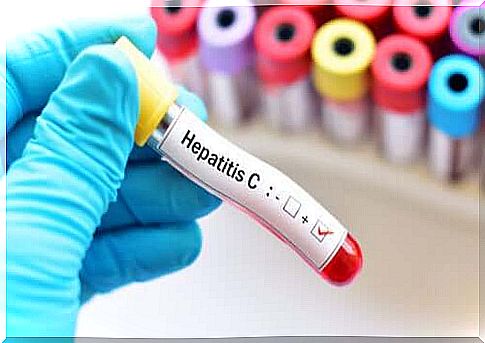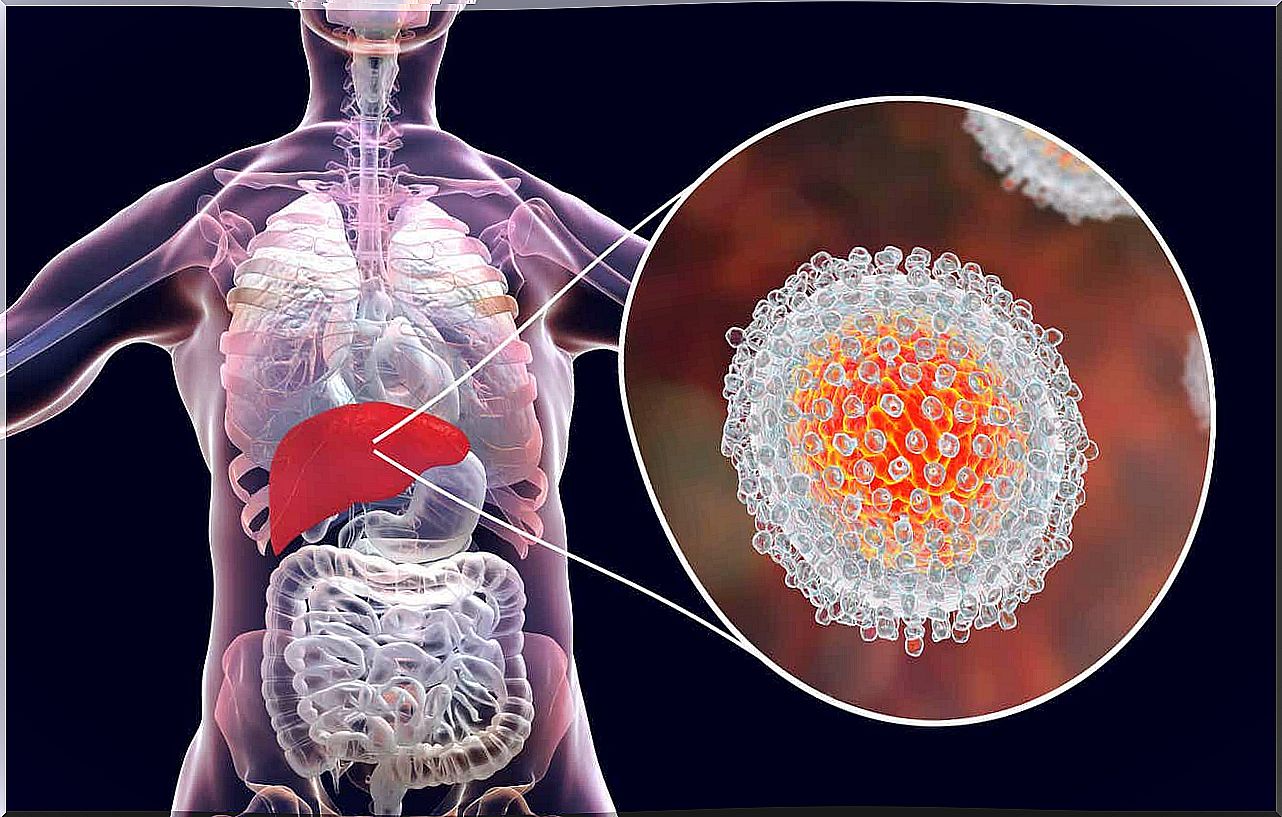Hepatitis C During Pregnancy

Although only a small number of people suffer from complications from Hepatitis C, it is still a public health problem. Hepatitis C is a worldwide viral infection. This infection is transmitted through the blood, especially through injections of illegal drugs.
Even though in most cases pregnant women have no complications, chronic infections may cause some women and babies to experience additional difficulties. If you want to know more about this topic, read on.
What is Hepatitis C?
Just as the name implies, hepatitis C is an inflammation of the liver tissue. According to an article by the World Health Organization (WHO – English link), the Hepatitis C virus can cause an acute or chronic infection. However, most people who suffer from this do not show any symptoms.
Nevertheless, the fact that people show no symptoms does not mean that their situation is not complicated. In fact, if people suffer from a chronic infection, it can lead to liver cancer. According to the WHO, 71 million people suffer from chronic hepatitis C infection.

Although this virus is spread worldwide, it is more common in certain areas of Europe and the Eastern Mediterranean. It is even more common in groups of people who use illegal injectable drugs.
How is this virus transmitted?
Blood is the fluid that transmits this virus. According to an article (Spanish link) from Offarm magazine, these are the most common modes of transmission:
- transfusions.
- hemodialysis.
- Addiction to intravenously administered drugs.
- Organ transplantation.
- Occupational accidents involving caregivers.
- Tattoos, piercings, and acupuncture.
In addition, expectant mothers can transmit infections to the fetus by vertical transmission.
According to an article (Spanish link) by the Federación Argentina de Sociedades de Ginecología y Obstetricia (Argentine Federation of Societies of Gynecology and Obstetrics) in the US, between 1 and 2.5% of pregnant women have this infection. As a result, the number of vertical transfers increases.
How Do I Know If I Have Hepatitis C?
Clinically, most patients have no symptoms, especially in acute infections. If patients have symptoms, the incubation period has ended. This can happen between 2 weeks and 6 months. The following are the most common symptoms:
- Yellow skin color (jaundice).
- Loss of appetite.
- Nausea and vomiting.
- Abdominal pain, especially in the upper right area (right hypochondrium).
- Fever.
- Dark urine.
- Pale or light stools.
If you have any of these symptoms, you should see a doctor as soon as possible to get a diagnosis of Hepatitis C. However, in many countries it is important to do this test regularly, especially during prenatal checkups.
These studies include blood tests, which test antibodies from the blood. If the level of antibodies is high, there is enough evidence to confirm that there is genetic material from the virus in the blood.
If the results are positive, doctors should assess the severity of liver damage. Then they can ask for a magnetic resonance elastography, an ultrasound elastography, or a liver biopsy, according to specialists from the Mayo Clinic (English link) in a study.
Treatment during pregnancy
During pregnancy, the treatment of Hepatitis C varies according to the severity of the liver damage and the symptoms the patients have. According to an article (Spanish link) from Revista de Gastroentelorogía del Perú (Magazine of Gastroenterology of Perú) , the therapy in this case has many goals:
“Pregnant women who have Hepatitis C virus must be very careful not to damage their liver.
In addition, they also need to control the effects of the virus and reduce the chances of passing it on to their children.”
Therefore, it is very important to avoid drugs that can affect the liver. This will prevent complications during the infection. Women suffering from cirrhosis (one of the consequences of chronic hepatitis) may experience certain difficulties, which require emergency treatments.
These treatments can include drugs to prevent blood clotting or even endoscopic or surgical procedures to treat varicose veins that can cause internal bleeding.
Hepatitis C During Pregnancy: How It Affects You And Your Baby
Many women can go through their pregnancy without noticing that they have hepatitis C. As we mentioned before, the risk of developing complications is quite low. But according to the previously cited articles, chronic infections can lead to cirrhosis or even cancer in certain cases.

Although vertical transfer is possible, there is no evidence to date that planned caesarean sections or breastfeeding interruptions would prevent it.
A study (Spanish link) titled Transmisión del virus de la hepatitis C al recién nacido (Hepatitis C Virus Transmission to the Newborn Baby) states that transmission can happen during childbirth, regardless of whether it is a natural birth or a caesarean section. In addition, the risk is higher if the mother has HIV.
According to an article (Spanish link) from Gastroenterología y Hepatología (Gastroenterology and Hepatology) , chronic infections with the hepatitis C virus do not cause any additional risks during pregnancy. If the mother is stable, the worst that can happen is for the baby to become infected.
While acute infections can cause alarming symptoms, it’s the slim possibility that you’re suffering from a chronic infection that can really affect the health of children. To detect this, it is very important to visit the doctor regularly.
Medical checkups are essential
Despite the fact that the hepatitis C virus does not cause major health problems, it is important to know that it can lead to certain complications.
Therefore, people should have access to screening tests or go to the doctor if they notice some of the aforementioned symptoms. In this way, they receive a correct diagnosis and are treated in time.









